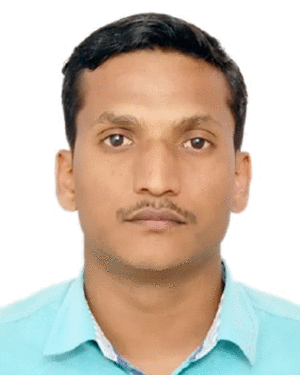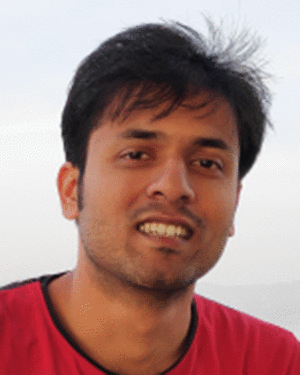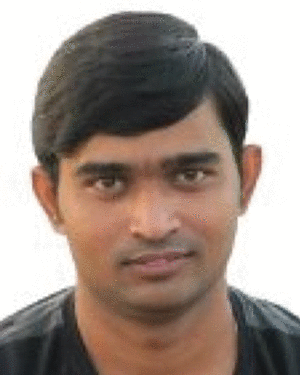Abstract:
In video frame segmentation, many existing deep networks and contemporary approaches give a remarkable performance with the assumption that the only foreground is moving,...Show MoreMetadata
Abstract:
In video frame segmentation, many existing deep networks and contemporary approaches give a remarkable performance with the assumption that the only foreground is moving, and the background is stationary. However, in the presence of infrequent motion of foreground objects, sudden illumination changes in the background, bad weather, and dynamic background, the accurate foreground object(s) segmentation is a challenging task. Generative adversarial networks (GAN) based training shows fruitful results in various fields like image-to-image style transfer, image enhancement, semantic segmentation, image super-resolution, etc. The limited results of hand-crafted approaches for moving object segmentation (MOS) and the robustness of adversarial training for a given task inspired us to propose a novel approach for moving object segmentation (MOS). In this context, an end-to-end generative adversarial network (two generators) with recurrent technique is proposed for MOS and is named as RMS-GAN. The proposed RMS-GAN is able to incorporate foreground probability knowledge with residual and weight sharing based recurrent technique for accurate segmentation. The recurrent technique helps us to exhibit the temporal behavior between successive video frames, which is more prominent for any video processing applications. Also, to enhance the spatial coherence of the obtained foreground probability map using the generator-1 network, the cascaded architecture of two generators is proposed. The effectiveness of the proposed approach is evaluated both qualitatively and quantitatively on three benchmark video datasets for MOS. Experimental result analysis shows that the proposed network outperforms the existing state-of-the-art methods on three benchmark datasets for MOS.
Published in: IEEE Transactions on Vehicular Technology ( Volume: 69, Issue: 12, December 2020)
Funding Agency:

Department of Electrical Engineering, Computer Vision and Pattern Recognition Laboratory, Indian Institute of Technology Ropar, Rupnagar, Punjab, India
Prashant W. Patil (Member, IEEE) was born in Latur, India, in 1992. He received the B.E. degree in electronics and telecommunication engineering from Pune University, India, in 2014, and the M.Tech. degree from SRTM University, India, in 2017. He is currently working toward the Ph.D. degree with the Department of Electrical Engineering, IIT Ropar, Rupnagar, India. His major fields of interests include image enhancement, c...Show More
Prashant W. Patil (Member, IEEE) was born in Latur, India, in 1992. He received the B.E. degree in electronics and telecommunication engineering from Pune University, India, in 2014, and the M.Tech. degree from SRTM University, India, in 2017. He is currently working toward the Ph.D. degree with the Department of Electrical Engineering, IIT Ropar, Rupnagar, India. His major fields of interests include image enhancement, c...View more

Department of Electrical Engineering, Computer Vision and Pattern Recognition Laboratory, Indian Institute of Technology Ropar, Rupnagar, Punjab, India
Akshay Dudhane (Member, IEEE) was born in Karkamb, India, in 1993. He received the B.E. degree in electronics and telecommunication engineering from Pune University, India, in 2014, and the M.Tech. degree from SRTM University, India, in 2017. He is currently working toward the Ph.D. degree with the Department of Electrical Engineering, IIT Ropar, Rupnagar, India. His major fields of interests include image enhancement, vi...Show More
Akshay Dudhane (Member, IEEE) was born in Karkamb, India, in 1993. He received the B.E. degree in electronics and telecommunication engineering from Pune University, India, in 2014, and the M.Tech. degree from SRTM University, India, in 2017. He is currently working toward the Ph.D. degree with the Department of Electrical Engineering, IIT Ropar, Rupnagar, India. His major fields of interests include image enhancement, vi...View more

Department of Electrical Engineering, Computer Vision and Pattern Recognition Laboratory, Indian Institute of Technology Ropar, Rupnagar, Punjab, India
Subrahmanyam Murala (Member, IEEE) received the B.E. degree in electrical and electronics engineering from Andhra University, Visakhapatnam, India, in 2007, and the M.Tech. and Ph.D. degrees from the Department of Electrical Engineering, IIT Roorkee, Roorkee, India, in 2009 and 2012, respectively. He was a Postdoctoral Researcher with the Department of Electrical and Computer Engineering, University of Windsor, Windsor, O...Show More
Subrahmanyam Murala (Member, IEEE) received the B.E. degree in electrical and electronics engineering from Andhra University, Visakhapatnam, India, in 2007, and the M.Tech. and Ph.D. degrees from the Department of Electrical Engineering, IIT Roorkee, Roorkee, India, in 2009 and 2012, respectively. He was a Postdoctoral Researcher with the Department of Electrical and Computer Engineering, University of Windsor, Windsor, O...View more

Department of Electrical Engineering, Computer Vision and Pattern Recognition Laboratory, Indian Institute of Technology Ropar, Rupnagar, Punjab, India
Prashant W. Patil (Member, IEEE) was born in Latur, India, in 1992. He received the B.E. degree in electronics and telecommunication engineering from Pune University, India, in 2014, and the M.Tech. degree from SRTM University, India, in 2017. He is currently working toward the Ph.D. degree with the Department of Electrical Engineering, IIT Ropar, Rupnagar, India. His major fields of interests include image enhancement, computer vision, image/video processing, moving object segmentation.
Prashant W. Patil (Member, IEEE) was born in Latur, India, in 1992. He received the B.E. degree in electronics and telecommunication engineering from Pune University, India, in 2014, and the M.Tech. degree from SRTM University, India, in 2017. He is currently working toward the Ph.D. degree with the Department of Electrical Engineering, IIT Ropar, Rupnagar, India. His major fields of interests include image enhancement, computer vision, image/video processing, moving object segmentation.View more

Department of Electrical Engineering, Computer Vision and Pattern Recognition Laboratory, Indian Institute of Technology Ropar, Rupnagar, Punjab, India
Akshay Dudhane (Member, IEEE) was born in Karkamb, India, in 1993. He received the B.E. degree in electronics and telecommunication engineering from Pune University, India, in 2014, and the M.Tech. degree from SRTM University, India, in 2017. He is currently working toward the Ph.D. degree with the Department of Electrical Engineering, IIT Ropar, Rupnagar, India. His major fields of interests include image enhancement, vision in low visibility, and medical image analysis.
Akshay Dudhane (Member, IEEE) was born in Karkamb, India, in 1993. He received the B.E. degree in electronics and telecommunication engineering from Pune University, India, in 2014, and the M.Tech. degree from SRTM University, India, in 2017. He is currently working toward the Ph.D. degree with the Department of Electrical Engineering, IIT Ropar, Rupnagar, India. His major fields of interests include image enhancement, vision in low visibility, and medical image analysis.View more

Department of Electrical Engineering, Computer Vision and Pattern Recognition Laboratory, Indian Institute of Technology Ropar, Rupnagar, Punjab, India
Subrahmanyam Murala (Member, IEEE) received the B.E. degree in electrical and electronics engineering from Andhra University, Visakhapatnam, India, in 2007, and the M.Tech. and Ph.D. degrees from the Department of Electrical Engineering, IIT Roorkee, Roorkee, India, in 2009 and 2012, respectively. He was a Postdoctoral Researcher with the Department of Electrical and Computer Engineering, University of Windsor, Windsor, ON, Canada, from 2012 to 2014. He is currently working as an Associate Professor with the Department of Electrical Engineering, IIT Ropar, Rupnagar, Punjab, India. His major fields of interests include computer vision, medical image processing, image retrieval, deep learning, artificial intelligence.
Subrahmanyam Murala (Member, IEEE) received the B.E. degree in electrical and electronics engineering from Andhra University, Visakhapatnam, India, in 2007, and the M.Tech. and Ph.D. degrees from the Department of Electrical Engineering, IIT Roorkee, Roorkee, India, in 2009 and 2012, respectively. He was a Postdoctoral Researcher with the Department of Electrical and Computer Engineering, University of Windsor, Windsor, ON, Canada, from 2012 to 2014. He is currently working as an Associate Professor with the Department of Electrical Engineering, IIT Ropar, Rupnagar, Punjab, India. His major fields of interests include computer vision, medical image processing, image retrieval, deep learning, artificial intelligence.View more


